High Energy Workouts for a Head Start on Swimsuit Season
It's easier to work hard when you’ve got a game plan. Here are some options to help keep you moving until the last second of your workout!
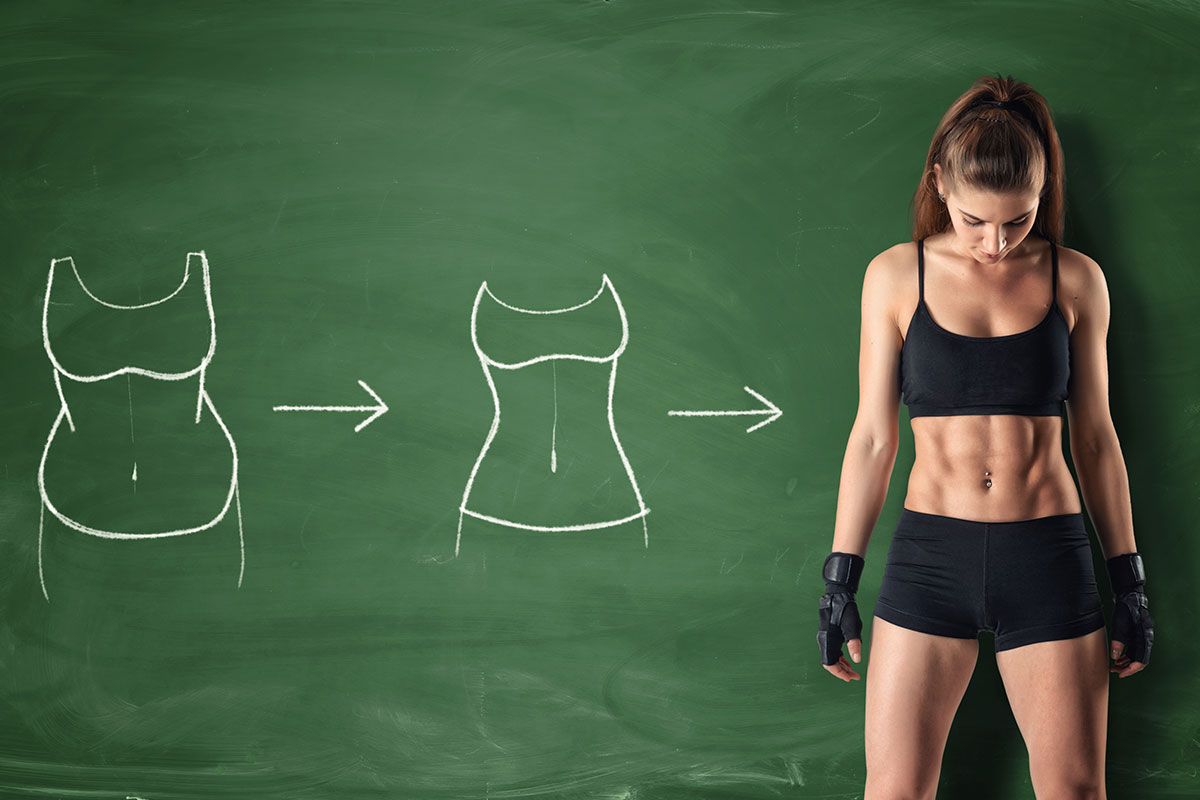
When that little extra cushioning suddenly turns into the spare tire you never wanted, chances are you’re starting to think about ways to quickly shed that excess fat and replace it with muscle.
To successfully make this happen, it’s important to first understand some facts about fat and muscle.

Most people know that obesity can lead to a laundry list of health concerns, including (but not limited to):
It’s not that all fat is bad for the body. In fact, our body needs fat to function. The idea instead is to get rid of excess fat that can cause damage to the body, create a sense of sluggishness, and lead to feelings of discontent.
Yes… and no. But, mainly yes!
Here’s why:
Cardio increases heart rate fast and typically burns more calories than weight lifting does. Because you’ll want to burn off the fat first, before focusing more on muscle building, cardio-forward workouts may be the most beneficial for those looking to lose fat – although, cardio should be combined with weight training for a balanced workout routine.
A few cardio exercises that are known for high levels of calorie burn include HIIT*, cycling, running, or use of the elliptical machine.
*Learn more about HIIT by LAF®.
Of course, there are other cardio options that may sound more appealing to some. These options include Group Fitness classes like Zumba® or sports leagues*.
*Check out LA Fitness Group Leagues here.
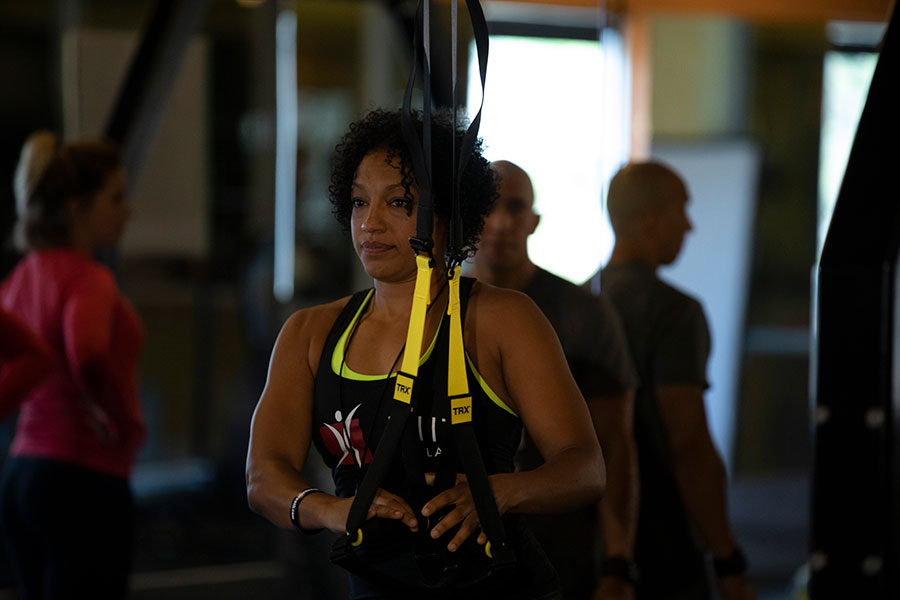
Check out this episode of Ask A Trainer with Master Trainer, Stone Thomas, who helps further answer if cardio or strength training is better for weight loss.
While it would be so much nicer if it were possible to just target a certain area of the body, it’s not realistic. That’s just not how fat loss works.
LA Fitness Pro Results® trainer, Kayla V., explains it more in the video below and gives tips on what can be done to increase weight loss overall.
http://bloglafitness.azurewebsites.net/2018/02/09/best-exercises-stomach-fat/
Consuming more calories than what your body is expending will, at the very least, lead to a weight loss plateau (if not weight gain).
In the beginning stages of weight loss, it’s so important to track your calories.
Once you have a better understanding of food proportions and how much you need to eat daily to lose weight, you can choose to stop tracking calories and just eat smaller, healthier options when your body signals that it’s hungry.
There are plenty of online options available to help better understand healthy eating and portion control.
And, if you’re an LA Fitness member, we have a special section called “Ask Our Dietitian” dedicated to answering your nutrition-related questions. Send them to us here.

Perhaps you’ve already shed the excess body fat and now you’re looking to increase your muscle mass. This is where things get fun.
Building muscle means your workouts should now encompass more weight training. To build muscle, rather than simply retain what you already have, you should increase your weight and decrease the number of reps you’re doing.
When questioning why our bodies tend to become tired and sore after working out, LA Fitness registered dietitian Debbie James, RDN shared “Since your muscles are sore, their cellular metabolism needs to be restored to normal. You might need more sources of potassium and anti-inflammatory compounds.”
These include:

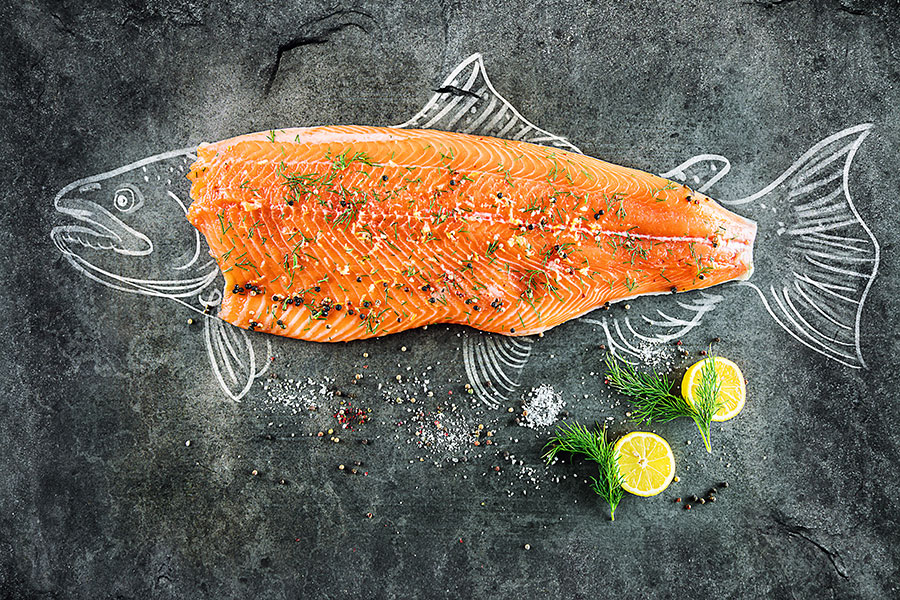
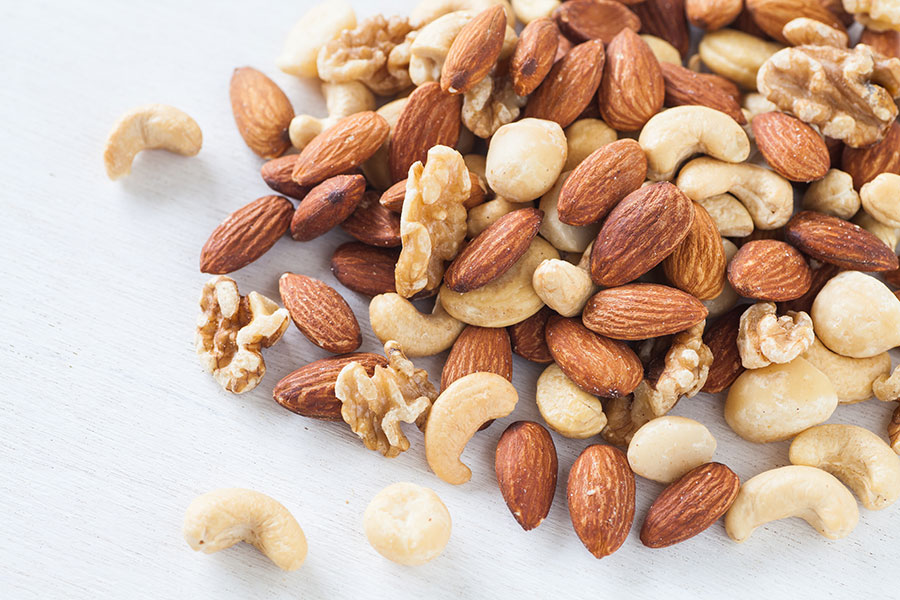
When you start training harder and more frequently, your body is going to need more calories because your body is going to be burning more energy.
This is where it might get tricky for someone who was formally at an unhealthy body weight.
You’ve heard it over and over again: “Cut calories and you’ll lose weight.”
So, you’ve become conditioned to eating less, but now your goal has changed. You’re no longer looking to drop fat; you’re looking to build muscle.
If you keep working out and not consuming enough calories the body begins breaking down the muscle you have, rather than repairing it or building it.
This is why protein should be your best friend when it comes to building muscle.
That lean-look, or definition of muscles, will come with time after body fat percentage is dropped and strength training has increased.
Understanding how to take your body from overweight to healthy and in shape sometimes takes the help of professionals. If you’ve found yourself struggling to make the transition on your own, it may be time to investigate personal training or dietic consulting.
Living a healthy lifestyle can be done by anyone, at any age, at any time.
All you have to do is get started.
Share what made you make the change in the comments below!
It's easier to work hard when you’ve got a game plan. Here are some options to help keep you moving until the last second of your workout!
Does liberally salting your food help you pump more iron in the gym? Registered Dietitian, Debbie James, investigates the claims!
It’s Multiple Sclerosis Awareness Month! Here is what you need to know about exercise safety with MS.

Welcome to the 26th episode of the Living Healthy Podcast, presented by LA Fitness.
On this **SPECIAL EDITION** of Living Healthy, it’s a fitness vs. nutrition showdown with guest experts Debbie James, RDN and LA Fitness Master Trainer, Geoff Fox. Who will be crowned the winner on this episode’s battle of the brains? Listen and find out!
And play along with us and let us know how you did! 🙂
How Are We Doing?
Special Shout-out
Thanks to our listeners who have sent in emails letting us know what you think of the show! Special shout out to Juliana M. who recently wrote in and said:
“I just wanted to say thank you because your podcasts are helping me transition into a healthier lifestyle especially after listening to episode 20 on fast food […] maybe one of your future podcast should be about vegetarian and vegan [options] talking about if it’s healthy or if we actually need meat. I’m on the crossroads.”
Well, Juliana, we heard you and we think that’s a great idea, so keep an eye out for our upcoming episode on The Plant-Based Diet: What You Need to Know.
This podcast should not replace any exercise program or restrictions, any dietary supplements or restrictions, or any other medical recommendations from your primary care physician. Before starting any exercise program or diet, make sure it is approved by your doctor.
Intro
Begins at 0:01
Introduction of LAF Registered Dietitian, Debbie James, and LA Fitness Master Trainer, Geoff Fox
0:52
Rules Announced
1:30
Round 1 – The Fitness Round – Begins!
2:26
Round 2 – The Nutrition Round – Begins!
7:50
Round 3 – The LA Fitness Trivia Round – Begins!
16:00
The Winner is Announced!
27:00
Special Member Shout-out
and Outro
27:39
It's easier to work hard when you’ve got a game plan. Here are some options to help keep you moving until the last second of your workout!
Does liberally salting your food help you pump more iron in the gym? Registered Dietitian, Debbie James, investigates the claims!
It’s Multiple Sclerosis Awareness Month! Here is what you need to know about exercise safety with MS.

Welcome to the 25th episode of the Living Healthy Podcast, presented by LA Fitness.
On this episode of the Living Healthy Podcast, we speak with LAF Personal Training Director, Tristen Alleman, and LAF Registered Dietitian, Debbie James, as they share their expert advice on how to gain weight the healthy way. This episode is for anyone that’s ever been curious about how they can add lean muscle, and increase body mass, without adding the unhealthy type of body weight. We approach this from both the fitness side of things and nutritional side, to help those struggling with weight gain, find a healthy and balanced way to do so with their training and nutritional routines.
How Are We Doing?
This podcast should not replace any exercise program or restrictions, any dietary supplements or restrictions, or any other medical recommendations from your primary care physician. Before starting any exercise program or diet, make sure it is approved by your doctor.
Introduction
Begins at 0:01
Introduction of LAF Personal Training Director, Tristen Alleman, and LAF Registered Dietitian, Debbie James
0:22
What Would Someone Want to Add on Weight or Muscle?
0:32
Do You Have to Increase Your Caloric Intake to Gain Weight?
2:36
How Does Strength Training Help Build Muscles?
4:50
What Foods Are Good to Eat on Cardio-Focused Work Out Days?
4:16
How Many Days Per Week Should You Strength Train?
7:02
Austin, Our Skinny Colleague, Joins the Show (and Talks Food and Lack of Weight Gain)
8:43
Can Everyone Benefit from Adding Muscle onto Their Body? Or Only Bodybuilders?
14:42
Are Supplements Good or Bad When It Comes to Bulking?
16:36
How Much Protein is Too Much Protein?
19:00
Can You Gain Weight and Bulk as a Vegetarian or Vegan?
20:01
Are Full-Fat Products Always the Best Option for Weight Gain and Bulking?
20:40
Why Are Women Afraid of Gaining Muscle?
22:23
Actionable Advice
24:38
Outro
26:06
It's easier to work hard when you’ve got a game plan. Here are some options to help keep you moving until the last second of your workout!
Does liberally salting your food help you pump more iron in the gym? Registered Dietitian, Debbie James, investigates the claims!
It’s Multiple Sclerosis Awareness Month! Here is what you need to know about exercise safety with MS.

Your bags are stuffed to the brim with all of your favorite travel essentials: extra sunscreen, that summer outfit you’ve been saving since last year, and beachwear you’ve spent all winter getting summer-body ready for. It’s safe to say that you’re mentally checked out from pressing work responsibilities and ready to soak up the sun on warm sandy beaches, drinking a surplus of tropical refreshments and putting away your micro scale for your summer adventure!
As a freelance writer and model, my work demands that I be on call and be very mobile. At any given moment I can be asked to pick up and go, and that can range from just about any location, with no guarantee that I will have access to a nearby LA Fitness.
The great news is that you don’t have to let your commuting or upcoming travel plans get in the way of your fitness goals and progress! You might actually see added benefits to working out while traveling because you are subconsciously telling your mind that fitness is everywhere I am, not solely in the confines of the gym! Remember, it’s all about integrating fitness as a lifestyle not solely a destination for producing results.
Granted, in comparison to a weekly regiment, these workouts are a bit more “relaxed” in intensity, but hopefully, with these easy tips, you too can maintain the progress you’ve worked so hard to reach pre-vacation season!

If conditions are safe and you have time to spare, save the cab fare and take a nice stroll in the area. Not only will you acquire major steps towards your daily step-goals, but you will simultaneously be able to take in and explore the city or perhaps coastal regions of your vacation time.
I have been able to experience far more on foot when traveling than relying on the convenience of public transportation. So, at any opportunity, plan ahead, wear your comfy shoes, and get those steps in!

Whether you are stuck inside your hotel room/Airbnb due to poor weather conditions or you aren’t familiar with the area, working from your “home-away-from-home” might be your only resort for added physical activity.
No worries here, a 15-30-minute full body HIIT blast can do just the trick!
Mini HIIT Blast Circuit:
(Repeat 2-5 times depending on your fitness level)

We get it, you’re on vacation. This is the time when you can completely sign-off from those at home responsibilities and break away from the mundane routine of every-day-life. The last thing you want to do is give yourself the chore of having to carve out time for a workout when truth be told, you would much rather sink your toes in the exfoliating warm sandy beaches.
Remind yourself that fitness can be experienced in many diverse and creative ways. You can swim, go horseback riding, hike, surf, go dancing, or boogie board and burn some calories while having fun. When we make fitness a part of the experience, it becomes more welcoming and less demanding to our physique!

What’s in my fitness travel bag:
Travel fitness essentials
•Tennis shoes
•Jump rope
•Resistance bands (1-3)
•Disks
Whether at home or island hopping, one thing you can always control is what you’re putting in your body as much as what you’re doing with your body on vacation. Enjoy what may seem like never-ending cheat meals and not counting calories or sticking to your macros. You’re on vacation—embrace it! While you’re enjoying the fruits of your labor, upping the hydration is the golden rule of all golden rules!
Consider that your body is probably working overtime in a week of relaxing and fun, so when you can— hydrate, hydrate, hydrate! If you have access to fresh citruses like lemon, limes, grapefruit or oranges, increased electrolytes and vitamin C will help replenish cells, relax muscles and keep that summer glow working from the inside out!
Wherever your travels take you, if you can’t find an LA Fitness nearby or much room in your suitcase for all your gym gear, know that your goals don’t have to start or stop solely on the convenience of your gym accessibility. Living well and doing well is based on intention and wherever you decide to take it!
To find an LA Fitness near you, click here.
It's easier to work hard when you’ve got a game plan. Here are some options to help keep you moving until the last second of your workout!
Does liberally salting your food help you pump more iron in the gym? Registered Dietitian, Debbie James, investigates the claims!
It’s Multiple Sclerosis Awareness Month! Here is what you need to know about exercise safety with MS.

Nearly half of the adults in the U.S. have high blood pressure. This means that you or someone close to you has a blood pressure reading at 130/80 or higher.
It wasn’t always this way – just a couple of years ago 1 in 3 Americans had high blood pressure instead of nearly 1 in 2.
So why the change? Does this mean we’re getting less healthy?
It’s quite the opposite. Based on years of scientific study, the change means we’re actually more aware of the effects of elevated blood pressure.
Two years ago, the definition of high blood pressure changed from 140/90 to 130/80 (technically 130+ or 80+, but we’re keeping it simple here). The result is that more people became classified as having high blood pressure. It doesn’t mean that thousands of people became ill overnight, though. It means we want people to know that high blood pressure is serious, and that it can begin damaging your blood vessels and organs at lower levels than previously thought, particularly if you don’t act to keep your numbers from rising.
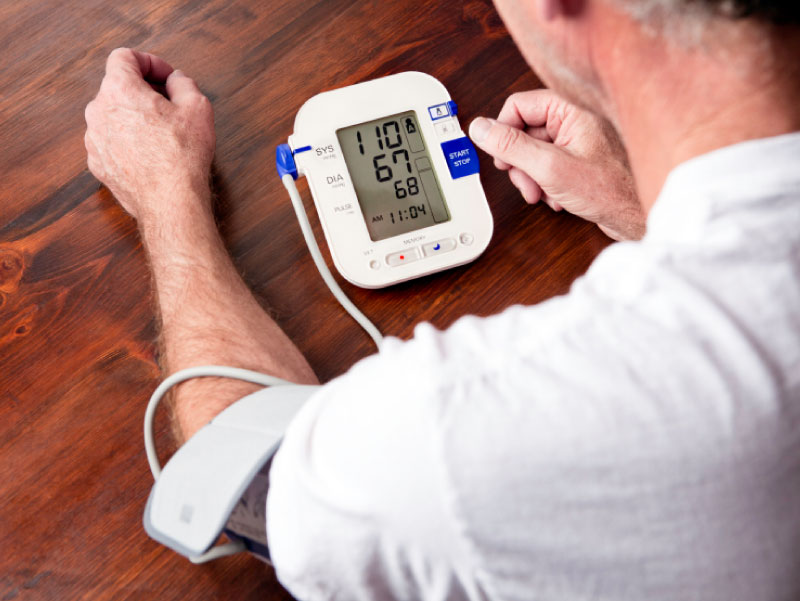
It’s worth noting that blood pressure tends to rise naturally as we age, so it typically hasn’t been on the health radar for people under age 45. However, with the new definition, an important health alert was sent to people in their 20s and 30s to pay attention to their blood pressure levels. Among men aged 20 -44, the rate of high blood pressure nearly tripled. Among women in that age range, it doubled.
The American Heart Association has created an interactive tool that can help you not only identify your health risk according to your blood pressure level, but also provide notes on what actions you can take to ensure it stays at, or gets to, a healthy level. You can check it out at www.heart.org/BPlevels.
Making changes that matter can have a significant impact on your blood pressure levels. In fact, most of those who suddenly find themselves with high blood pressure under the new definition will be given a “prescription” for lifestyle changes – not medicine – that can lower their pressure. Even for those who do require medication to control their levels, lifestyle changes help those meds work better and can even help you stay on lower doses. Some examples of a lifestyle change prescription include:
Physical activity:
A healthy diet:
Sodium (i.e. salt):
Weight loss:

The benefits of lifestyle change can add up quickly. Many of the same lifestyle prescriptions that lower blood pressure also reduce the risk of other dangerous conditions such as diabetes, high cholesterol, and heart disease. Eating a healthy diet, maintaining a healthy weight, and getting regular physical activity can help you lead a healthier and longer life!
Article contributed by Sondra DePalma, DHSc, PA-C, Cardiology, PinnacleHealth Cardiovascular Institute, Harrisburg, PA
American Heart Association Volunteer
Disclaimer: Some slight edits may have been made to the article’s original copy for grammatical reasons and/or clarity.
It's easier to work hard when you’ve got a game plan. Here are some options to help keep you moving until the last second of your workout!
Does liberally salting your food help you pump more iron in the gym? Registered Dietitian, Debbie James, investigates the claims!
It’s Multiple Sclerosis Awareness Month! Here is what you need to know about exercise safety with MS.
Be the first to know about exclusive
content, deals and promotions